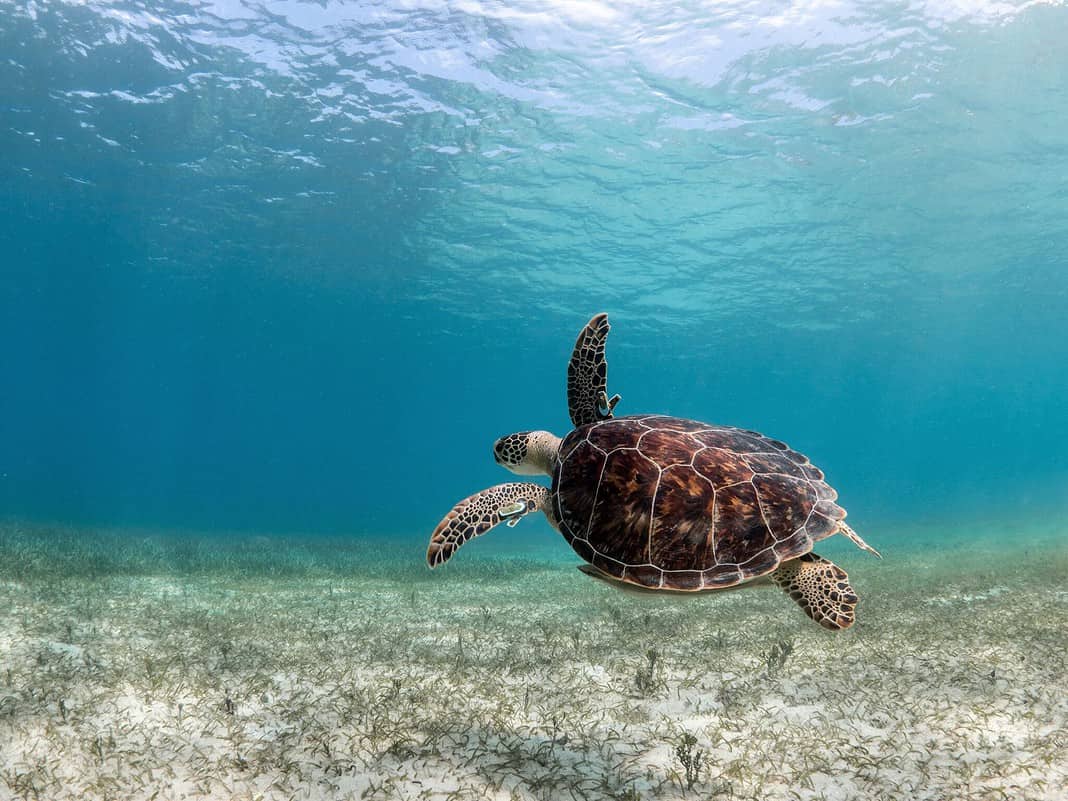
Scuba diving Puerto Rico should be near the top of every diver’s destination list. The small island is home to incredible diving and is one of the best places to dive in the Caribbean. The island and its surrounding waters are blessed with a fantastic climate. With air temperatures ranging between 70F/21c and 83f/28c year-round. While the water temperatures stays between 79F/26c and 84f/28.8c.
With a great climate, you can visit Puerto Rico year-round, although the best time is around November and December. However, be aware this is the height of the tourist season, and things can be hectic. If you prefer to visit at a quieter time, June to November is an excellent time. During this period, the waters and climate are still fantastic, with a diverse amount of wildlife to see.
If you are concerned about hurricanes, there is little need to worry. Although there are plenty of warnings, Puerto Rico is somewhat off the hurricane track. Hurricanes are rare, with the last two major hurricanes happening in 2017 and 1931.
Location
Las Cuevas
A veritable underwater amusement park Las Cuevas should be on every itinerary for a scuba diving Puerto Rico trip. The site is home to an extensive collection of tunnels, caverns, canyons, and arches. The site is relatively shallow, with a maximum depth of 30ft/9m. making it the perfect dive site for beginners or an easy second dive of the day.

Located off Desecheo Island, the site is only reachable by boat; however, it is more than worth the trip. Las Cuevas is home to a rich and diverse marine life scattered in the caverns and tunnels and on the reef outside. Exploring the walls of the caverns and arches, you can find small crabs, lobsters, and small shrimps. It is best to bring a torch to help with your discoveries. There is still plenty of marine life swimming outside the caverns and tunnels. You can encounter many different reef fish darting around and the occasional shark sleeping on the sandy bottom.
Cayo Lobito
Arguably the Puerto Rican capital of nurse sharks, a scuba diving Puerto Rico trip would not be complete without a trip to Cayo Lobito. A small shore diving site located off Culebra, Cayo Lobito is not a deep dive and is open to advanced and intermediate divers with a dive depth around 75ft/22.5m

Dropping down on the coral reef, you will find a great reef followed by nurse shark after nurse shark and another nurse shark. After getting bored with nurse sharks, you will see that you can also find jacks, barracuda, and a range of other reef fish at the site. A closer look around the coral will soon produce a host of other smaller critters, shrimps, crabs, and nudibranchs.
Aside from the great marine life, and relatively easy diving conditions, Cayo Lobito is also well known for having outstanding visibility.
B-29 Bomber Wreck
Diving the B29 wreck highlights any scuba diving Puerto Rico trip. This unique bomber crashed into the ocean in the water off Aguadilla in 1946. The wreck is only open to advanced divers since it lies on the sea bottom at a depth ranging from 111ft/34m and 120ft/37m and lies two to three miles from the coast of Aguadilla.
The aircraft was flown by 2nd Lieutenant James B. Giacomo and 2nd Lieutenant James A. Barrett, while the flight engineer was master Master Sergeant Edward Herrick. Talking about the crash, Lt. Giacomo said that the aircraft skimmed the water for around 400 feet before the nose dug into the sea and went under. The impact put enormous stressors on the plane’s superstructure, and the B29 broke around the radar dome in half. According to the surviving crew, the tail section sank rapidly, disappearing in about 45 seconds. The front of the aircraft bobbed around on the surface for around 4 minutes before plunging into the sea.

You can see the effects of the crash impact when you dive the wreck. There is a large debris field in the middle of the sandy and coral bottom. In the middle of this, you can make out the canter of the fuselage section with 140ft/60m wings. You can still see the four engines hanging off the wings. The propellers were ripped off in the crash, and all four can be found lying neatly nearby on the seafloor.
Diving the B29 is a great dive into history and a rare chance to dive with a WWII-era aircraft still in remarkably good condition. Over the years, the airframe has developed lots of coral growth, and there is lots of marine life on the wreck. When coupled with the excellent visibility at the site, make the B29 one of the most memorable dives of your scuba diving Puerto Rico trip.
Angel Reef
Angel reef would match the description if you had to describe the perfect dive and snorkeling site. This pristine dive site offers some of the healthiest vibrant coral and marine life on any scuba diving Puerto Rico itinerary.
Angel Reef is suitable for every level of diver and is relatively shallow, ranging in depth from 40ft/12m to 60ft/18m. the healthy coral supports a diverse marine ecosystem with many reef fishes darting around. You can see big schools of butterflyfish, damselfish, and grey angelfish, to name a few.
When diving Angel reef, you can also have a small looking into history since the ref is home to fish and a host of old Spanish anchors abandoned centuries ago. With perfect easy conditions, a shallow depth, and rich marine life, Angel reef is ideal for everything from a chilled-out second dive for experienced divers to a try dive or even a snorkel for non-divers.
Scuba Diving Puerto Rico Island Gem Mona Island
Mona island is the jewel in the crown of Puerto Rican diving. So much so that if your scuba diving Puerto Rico trip misses Mona Island, then you haven’t really dived Puerto Rico. Mona island is home to some incredible pelagic diving and high-octane scuba adventures. Slipping into the water off the island, you can encounter a large variety of large animals, including Humpback whales and sharks.
The island lies 50 miles off the coast of Puerto Rico, making it a long journey but won that is well worth it. While typically it is only dived via liveaboard, day boats occasionally venture out this far, and if you are offered the opportunity, you should jump at it.

The water around Mona offers unparalleled visibility that can reach a stunning 165ft/73m. its location where the Atlantic meets the Caribbean means that it is home to strong currents, and strong currents need big fish to swim in them. Diving off Mona Island, you can find beautiful corals and biodiversity. Encounters with turtles, sharks, Humpback whales, and more are regular in the right season. Many divers describe diving on Mona Island as a warm water version of Socorro or Galapagos. Due to the conditions, Mona Island is only suitable for experienced divers.
One thing to note is that if you would like to visit the land of Mona island itself, you need a permit. You can obtain a permit from the local environmental department
About the Author

Ricky Díaz
Aventura, Florida and Dorado, Puerto Rico.
Hollywood Real Estate Investments LLC founded in Florida in 2004.
Commercial real estate broker in New York City for 6 years.
Financial Advisor - 15 years (1989 - 2004) Merrill Lynch and Smith Barney.
Education- BA- University of Georgia -MBA- Inter- American University of Puerto Rico-Metropolitan Campus.
Whether you're in the research phase at the beginning of your real estate search or you know exactly what you're looking for, you'll benefit from having a real estate professional by your side. I'd be honored to put my real estate experience to work for you.
Florida Broker Lic. # 3052738 & Puerto Rico Broker Lic # C-22707
*Fully Bilingual - Spanish/English*
Contact via WhatsApp - link in the navigation Bar
+1(305) 794-1678

